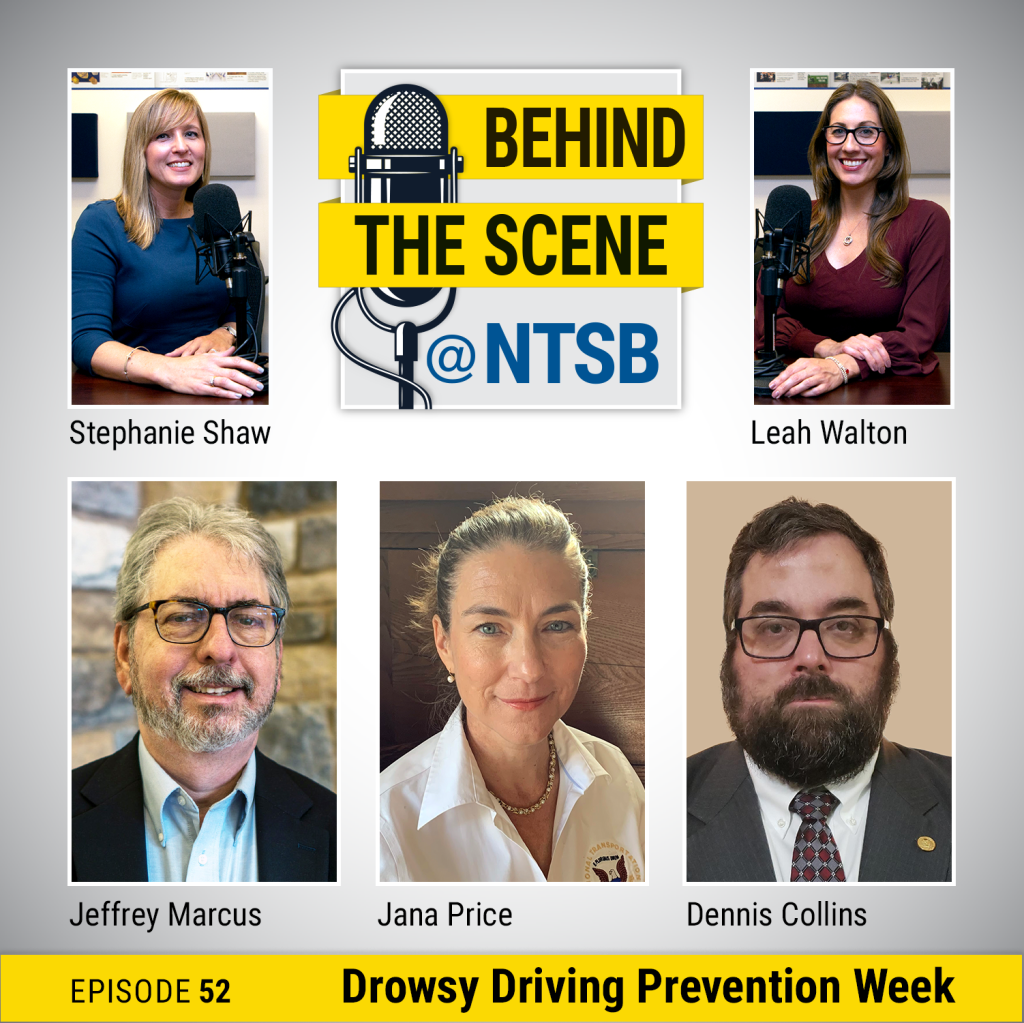By Stephanie Shaw, Acting Chief, NTSB Safety Advocacy Division
This week, families and friends will gather to celebrate the Thanksgiving holiday. According to estimates from AAA, nearly 55 million people will travel away from home this year, with about 49 million of them taking to the roads.
As we mark the beginning of the holiday travel season, we want to ensure that everyone arrives safely at their destinations. Unfortunately, travel on our roads can be the riskiest mode of travel during the holiday season.
NTSB investigations continue to highlight actions needed by regulators, legislators, and industry to ensure the safest transportation system for the traveling public. Our Most Wanted List (MWL) identifies specific transportation safety improvements needed across all modes. It includes five road safety improvements that address pervasive problems like speeding, alcohol and other drug impairment, and distraction. The MWL also calls for collision-avoidance and connected vehicle technologies and implementation of a Safe System Approach to better protect all road users.
At the NTSB, we believe that safety is a shared responsibility, so for the traveling public, we’ve highlighted some ways you can keep yourself and others safe, regardless of the travel mode you choose.
By Car
Impairment by alcohol and other drugs, unsafe speeds, fatigue, and distraction continue to play major roles in crashes. Here’s what you can do:
- Designate a sober driver, or call a taxi, or ridesharing service if your holiday celebrations involve alcohol or other impairing drugs.
- Follow safe speeds. In bad weather, safe speeds are often below the designated speed limit. Speeding increases the chance of being involved in a crash and intensifies the severity of crash injuries.
- Make sure you’re well rested! A fatigued driver is just as dangerous as one impaired by alcohol or other drugs.
- Avoid distractions. Don’t take or make calls or text while driving, even using a hands-free device. Set your navigation system before you start driving. If you’re traveling with others, ask them to navigate.
- Make sure to use the correct safety restraint for child passengers, and be sure it’s installed correctly.
- Ensure you and all your passengers are buckled up! In a crash, seat belts (and proper child restraints) are your best protection against death and serious injuries.
By Bus
The NTSB has made recommendations to improve motorcoach operations and vehicle crashworthiness, but travelers should know what to do in an emergency.
- Pay attention to safety briefings and know where the nearest emergency exit is. If it’s a window or roof hatch, make sure you know how to use it.
- Ask your driver to give you a safety briefing if you’re unsure of where the exits are or how to use them.
- Use your seat belt when they’re available!
By Plane or Boat
These tips can help you and your loved ones in an emergency on planes or vessels.
- Pay close attention to the safety briefing! Airline and marine accidents have become very rare, but you and your family can be safer by being prepared.
- Know where to find the nearest emergency exit and flotation device whether you’re on an airplane or a boat.
- Confirm that you and your traveling companions—even children under age 2—have your own seats and are buckled up when flying.
- Don’t forget your child’s car seat. The label will usually tell you if your child car seat is certified for airplane use; the owner’s manual always has this information.
- Call the airline and ask what the rules are for using a child’s car seat on your flight, if you don’t already know.
- Follow crewmember instructions and remain calm in an emergency.
By Train
The NTSB has made recommendations to improve passenger rail operations and vehicle crashworthiness, but travelers should also follow these safety tips.
- Stow carry-ons in the locations provided (overhead and racks). Don’t block aisles.
- Review your trains safety information which may be provided as a safety card in your seat pocket or displayed in your railcar.
- Follow crewmember instructions and remain calm in an emergency.
No matter how you travel, make a commitment to put safety first.
We wish everyone a safe and happy Thanksgiving.


